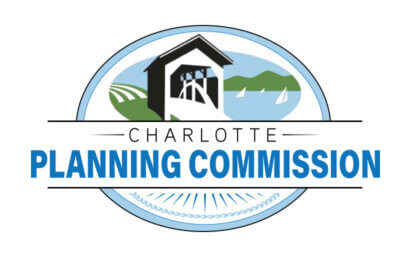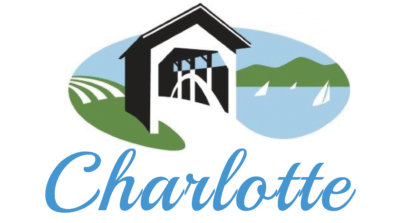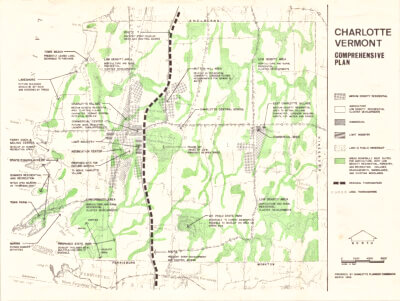Tide seems to be changing with current village planning project
On Wednesday, Feb. 14, I was invited to attend, along with other community members, a brainstorming session with the leaders of the Charlotte East and West Village Project. Larry Lewack, town planner; Darren Schibler, senior planner at the Chittenden County Regional Planning Commission; and Bob Bloch, planning commission liaison to the group, led the discussion about the future of the east and west villages of Charlotte.
In order to gather input from all interested parties, the group will continue these sessions to include those who live in the villages and the town at large, as well as engage business owners, land owners and others who have shown interest in the future of the villages. A significant goal of these meetings, as stated by Lewack, is “to build bridges” and develop consensus for future development.
The Charlotte East and West Village Project began in earnest in the fall of 2023. As stated on its “Projects FAQs” under the planning commission’s website, “The project was made possible by $85,000 in federal and state funding the town has secured. Town planner Larry Lewack secured a $13,000 bylaw modernization grant from the Vermont Agency of Commerce and Community Development in late 2022. That funding leveraged an additional $72,000 in federal funds, plus a commitment of $12,000 for a transit options study through regional planning.” At its core, the project “is an examination of future development and multi-modal transportation in Charlotte’s villages, informed by prior planning efforts and community input.”
Mike Dunbar, one of the attendees, noted, “policy matters.” How, why and where development occurs in the villages is dictated by land-use regulations. Dunbar knows this first hand; he developed and owns Charlotte Crossings, home to Backyard Bistro, Charlotte Work Club, The Gilded Elephant and Junapr and also owns a significant parcel at 251 Ferry road, which is in the process of development. His plans for the west village property include renovating the existing house for multi-unit, class A office space (his original plan was for mixed use, but felt the regulations were too cumbersome, so he decided on commercial only). He is committed to working with the trails committee in order to bring the trail section that is on his property to the village.
Policy translates to changes in the land-use regulations making way for potential municipal infrastructure and development. Lack of parking, sidewalks and stormwater were hot topics, as well as multi modal transportation, especially how those who don’t or can’t drive would get about in town.
When the group was asked about the number of additional houses or businesses they would like to see in the villages, senior housing, small condos and apartments were mentioned repeatedly.
Jon McGuire shared his plans for 20 senior housing units southwest of the old Sheehan house in the east village, which he is renovating for a future restaurant.
The Burns property was also mentioned as a potential location for development since it is in the heart of the west village, an ideal location for small apartments, condos and senior housing. Lack of a master plan for the Burns property was a significant topic since it accounts for 53 acres of town-owned land. A significant percentage of the parcel is wetland forest, west of the new town garage. There is another 26-acre parcel along Greenbush Road which is not conserved, as well as the development potential north of the very modest municipal wastewater facility. Whether conserved land close to or in the village districts should remain so was also discussed.
Current land-use regulations designate a village district and commercial village district in the east and west villages; the question is whether they should be consolidated and simplified into a single village district. Boundaries of the villages were also discussed and whether or not they should increase in size and if they are in the right location.
Contrary to the historic settlement pattern in the villages, 5 acres is required for residential development in the village districts. This disconnect has been brought up countless times at countless meetings and is perhaps the most obvious and needed fix. It is a major obstacle to development. The 5-acre minimum also came up regarding the rural district. Is it necessary? Although we were there to discuss village development, it seemed appropriate to think broadly since the overwhelming majority of development has been, and continues to be, in the rural district.
Maura Wygmans, co-owner of Classic Home in Charlotte, has suggested to the selectboard on various occasions to consider impact fees as a means of funding future projects, such as a recreation center. To do this, Charlotte would be required by state statute to adopt a capital budget, and prior to that, the selectboard would need to identify infrastructure needs and costs (sidewalks, wastewater, water, recreation, etc). Creating a capital budget is an issue that has come up repeatedly in discussions about the pros and cons of a town manager.
Discussion also focused on the significant role the selectboard plays in advocating and promoting new initiatives such as infrastructure in the villages. Developers, be they residents or not, need town support for projects consistent with the future vision.
These small group meetings will continue and the project is on track to have conceptual village designs presented for feedback in April of this year.
I asked Lewack about the time frame for engineering studies for municipal water and wastewater. He said Chittenden County Regional Planning estimated three to four years. More importantly, Lewack said, “It’s in our best interest to push for these applications to get submitted ASAP, once we have determined village infrastructure needs though this project.”
I have been a party to many discussions on this topic over the last 10 years; at planning commission meetings, selectboard meetings, library meetings, Community Heart and Soul, etc. There was a difference at this meeting; it is part of a larger project, gaining momentum, and by building consensus, there will be deliverables the town will weigh in on. My sense is Charlotte is in a different place, more open to contemplating the future and figuring out how to get there.
I think the tide is changing.
(Peter Joslin is a former chair of the planning commission and a member of The Charlotte News board of directors. The opinions expressed here are his own and not necessarily those of the board.)
Related Stories
Popular Stories
If you enjoy The Charlotte News, please consider making a donation. Your gift will help us produce more stories like this. The majority of our budget comes from charitable contributions. Your gift helps sustain The Charlotte News, keeping it a free service for everyone in town. Thank you.
Andrew Zehner, Board Chair






